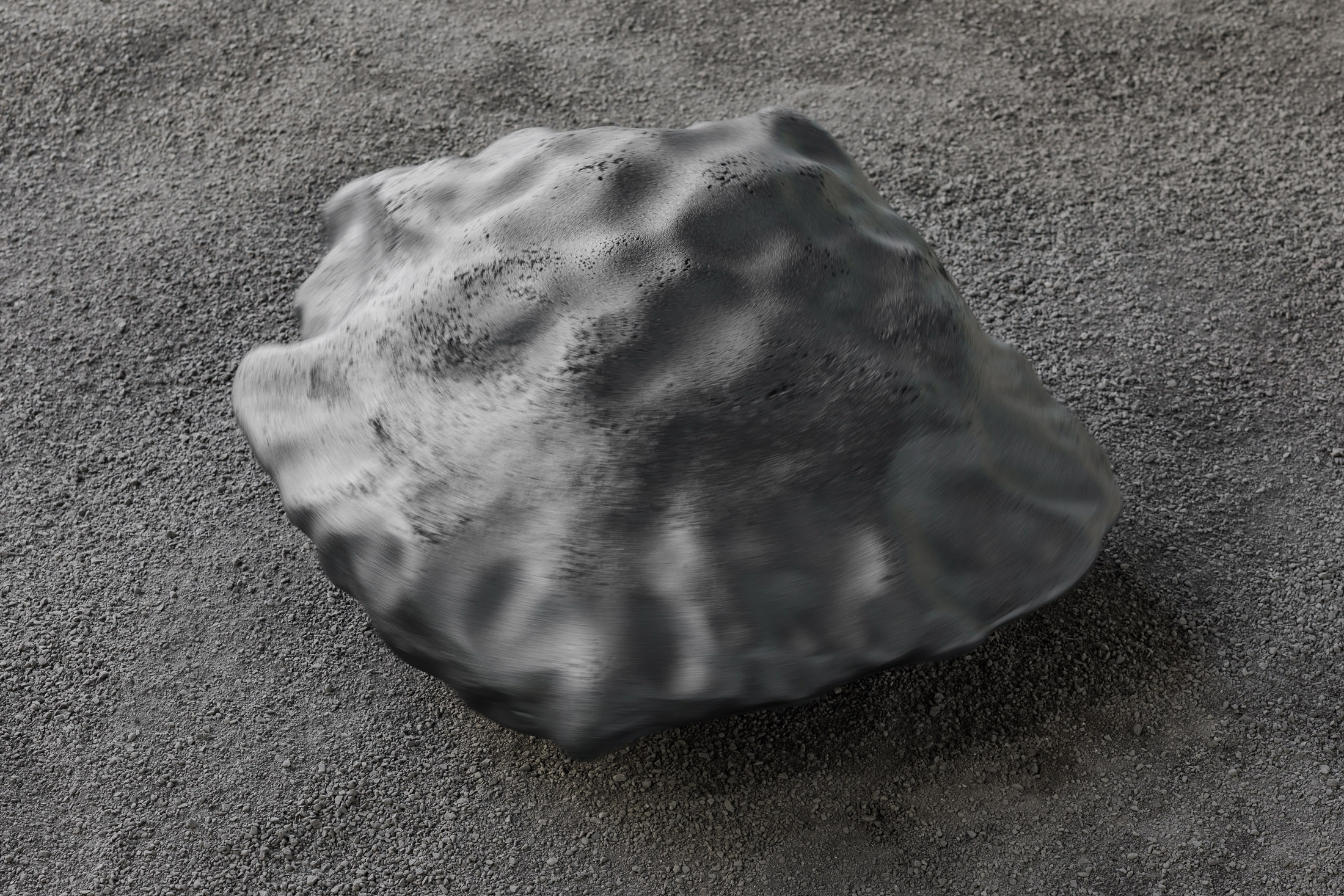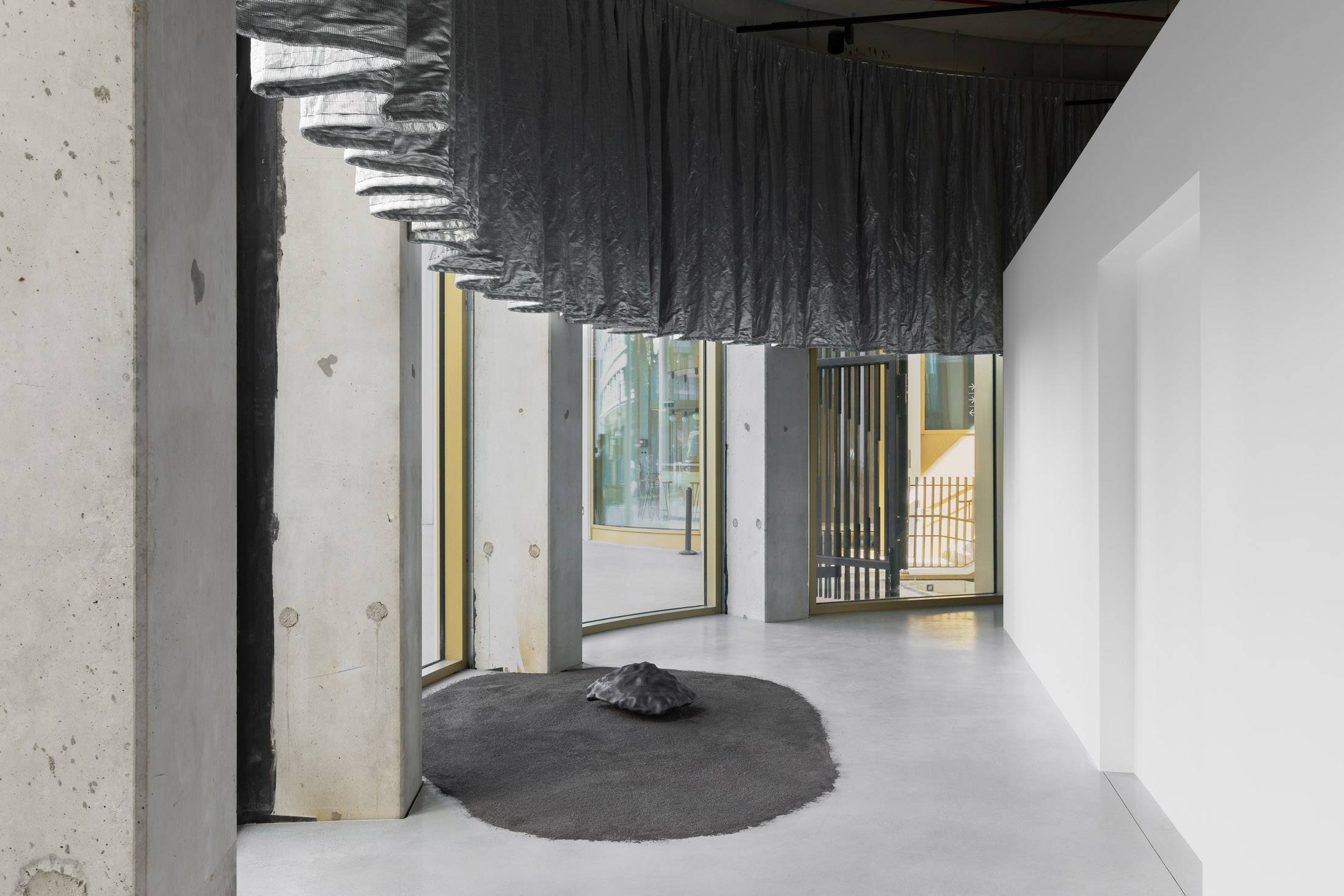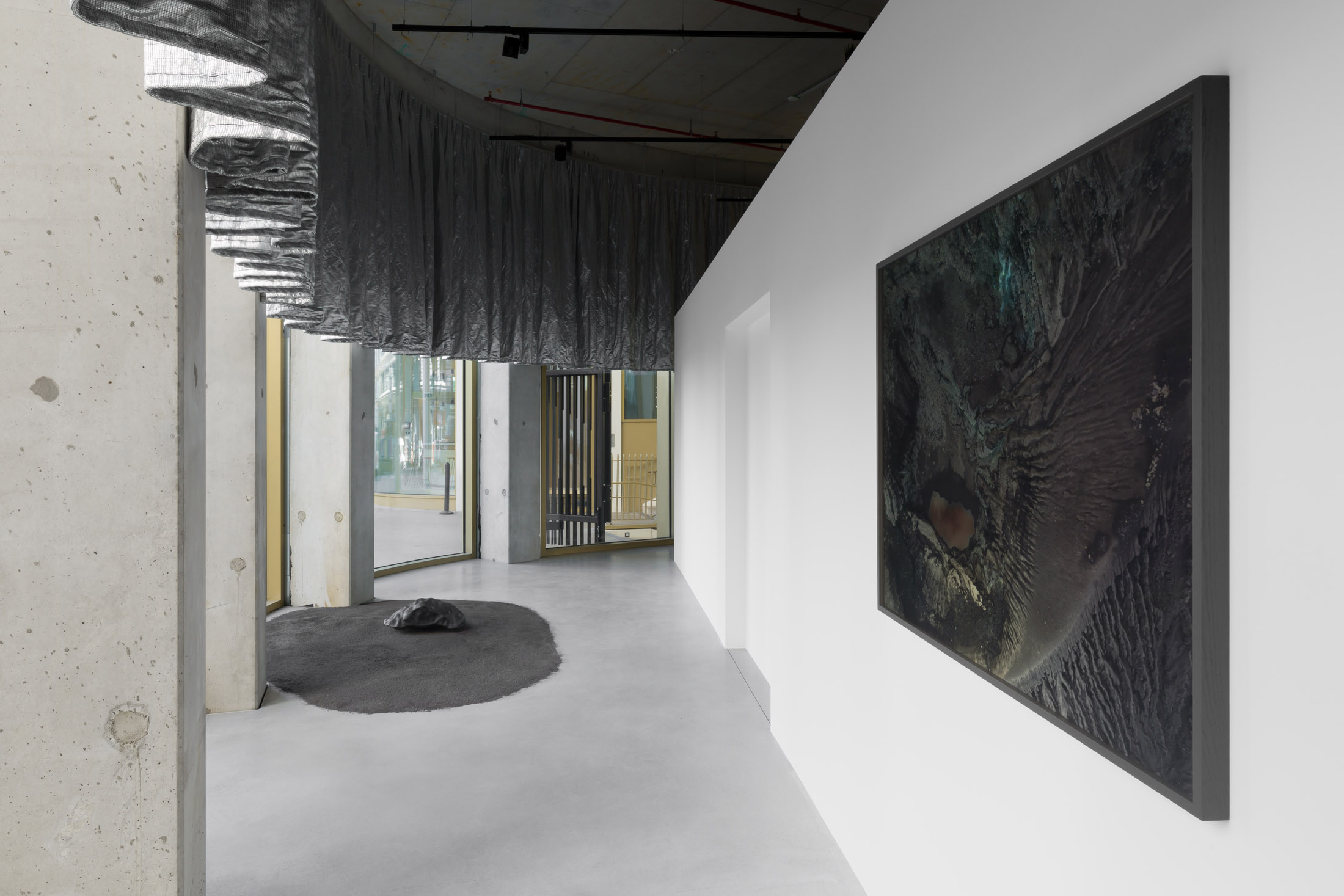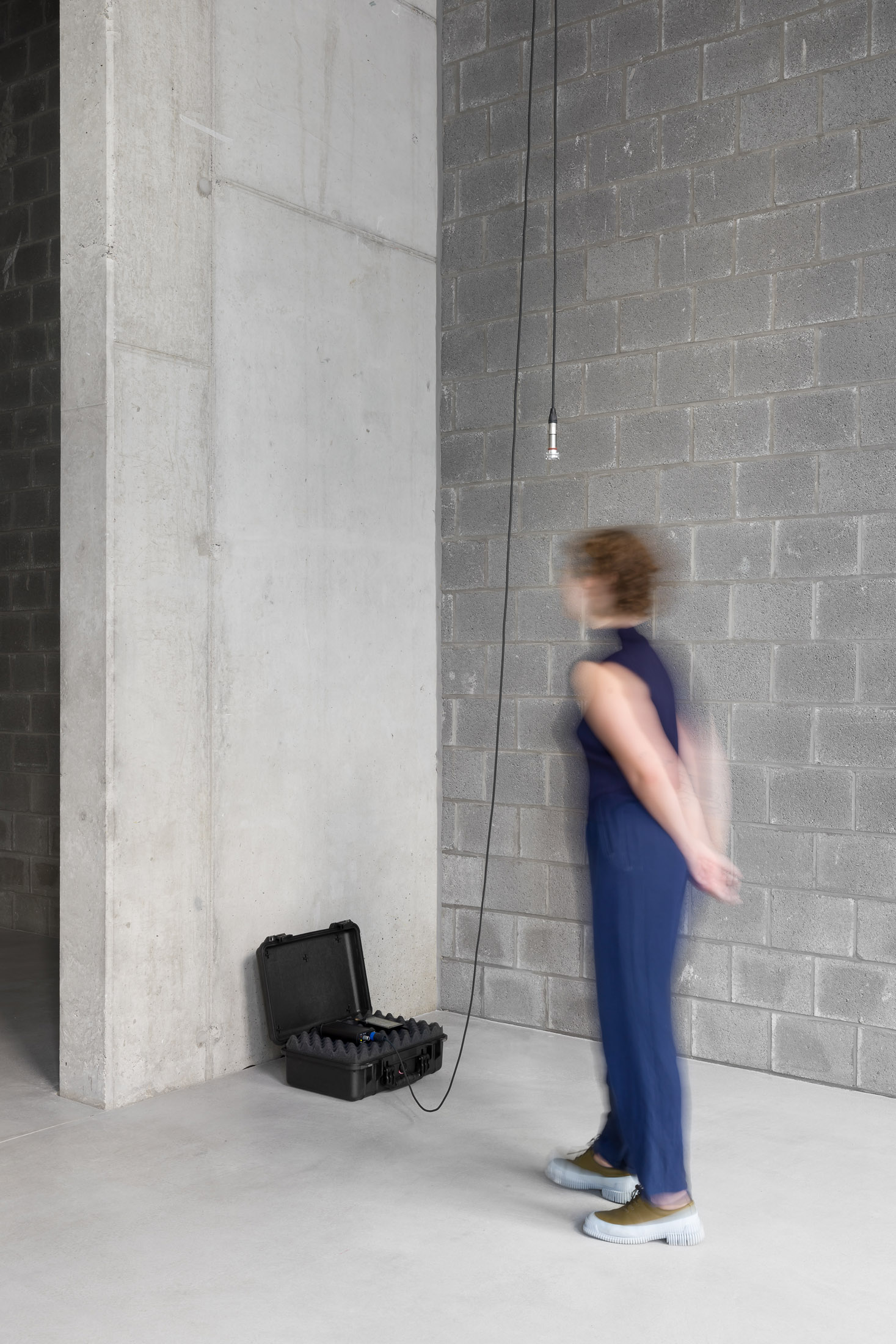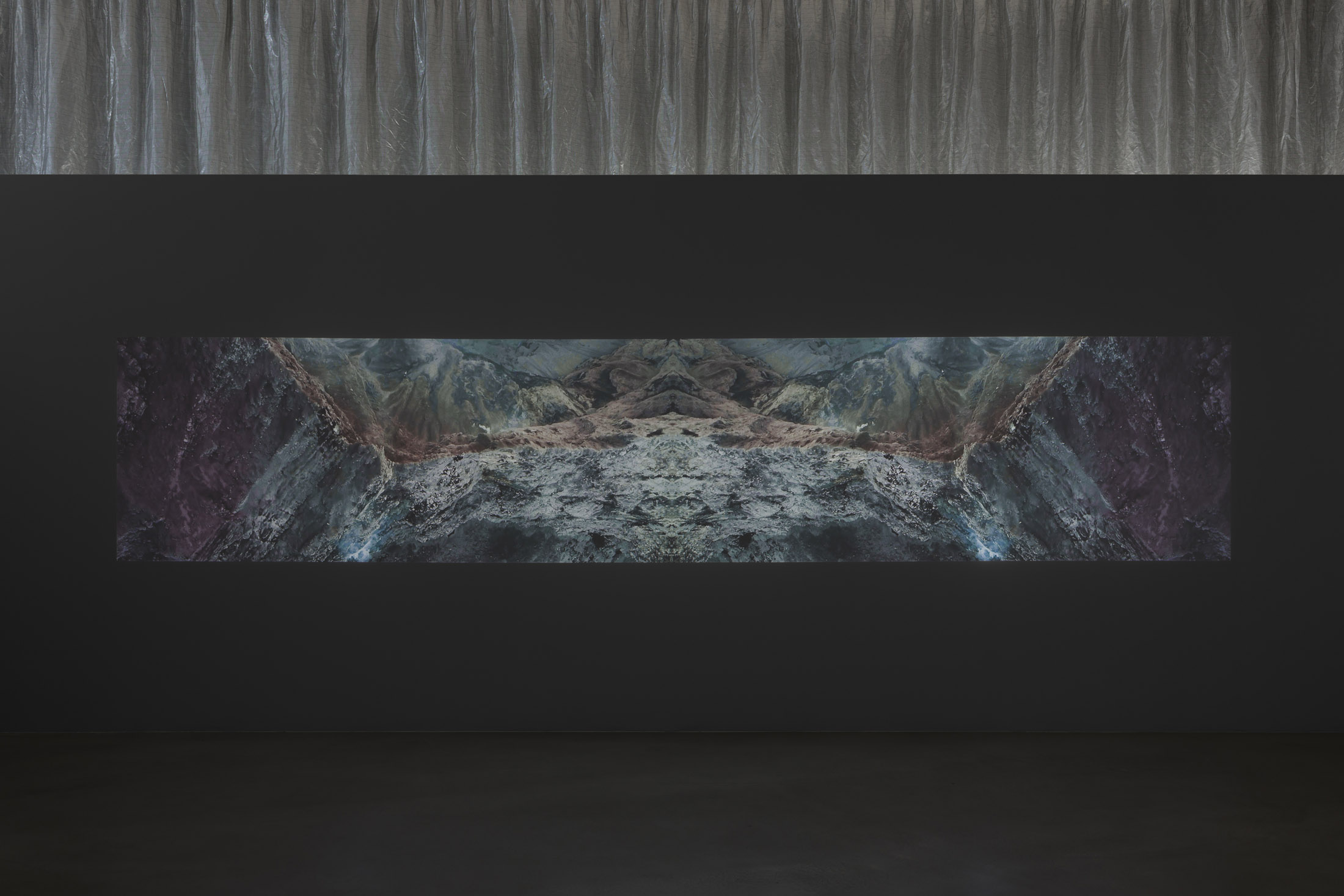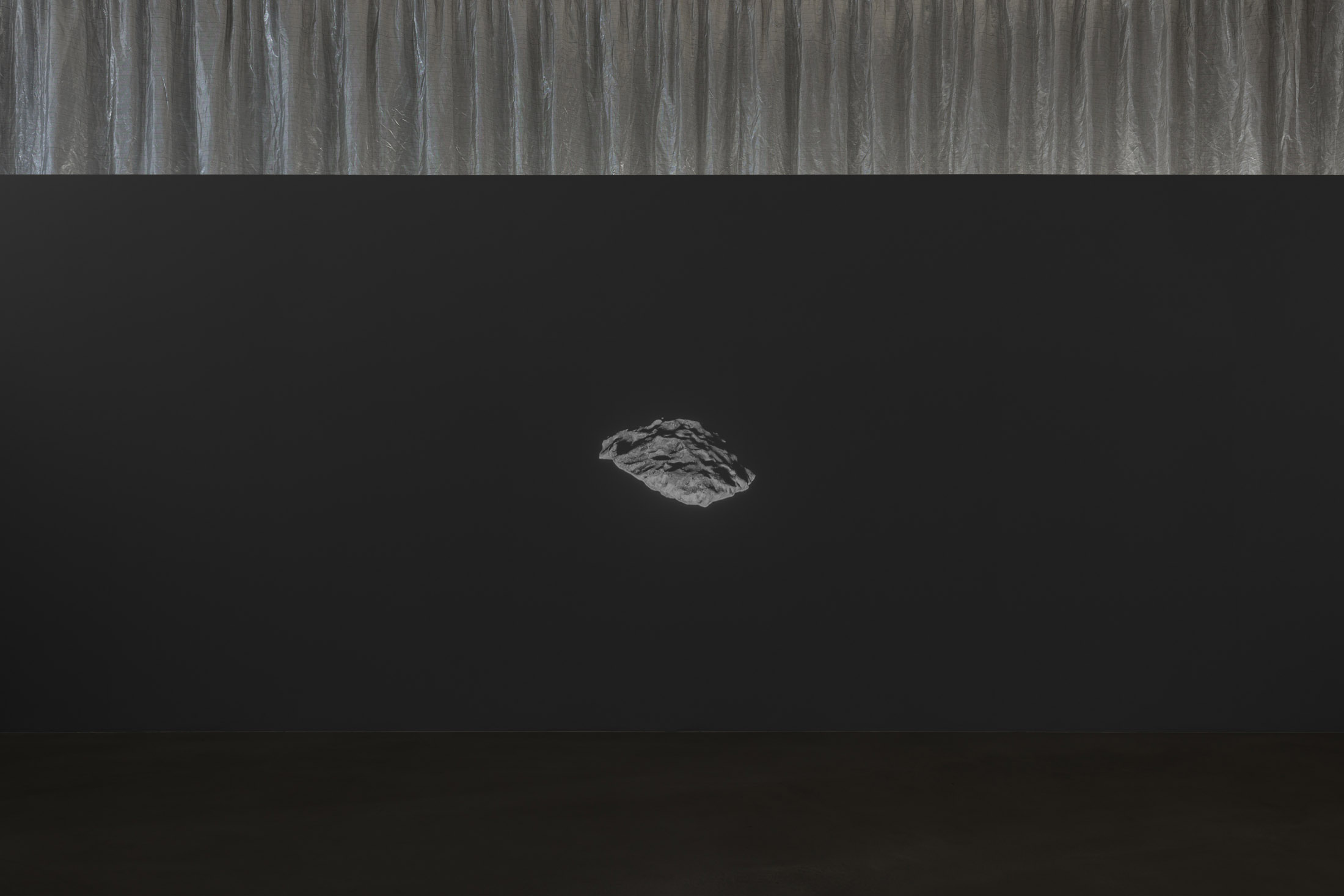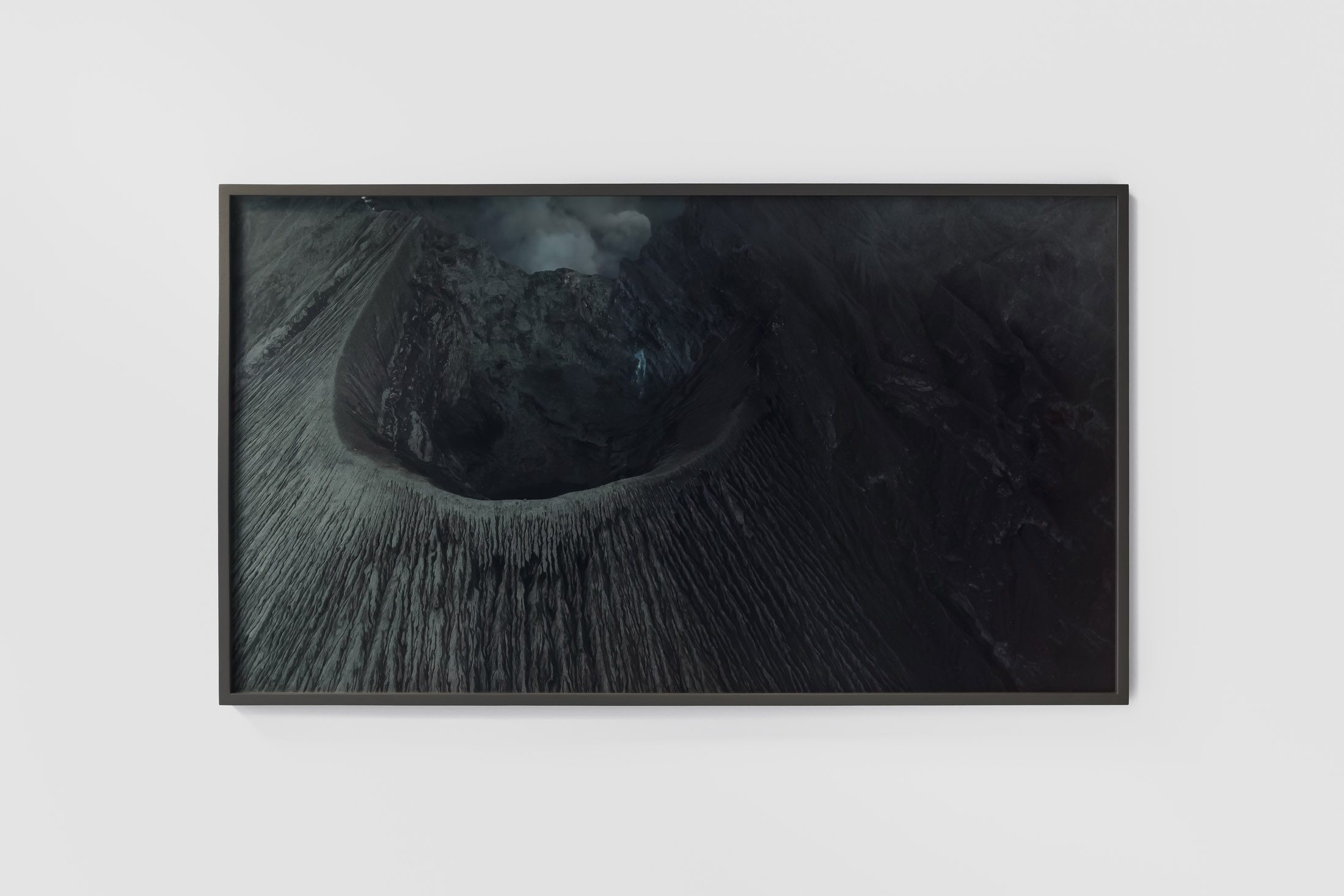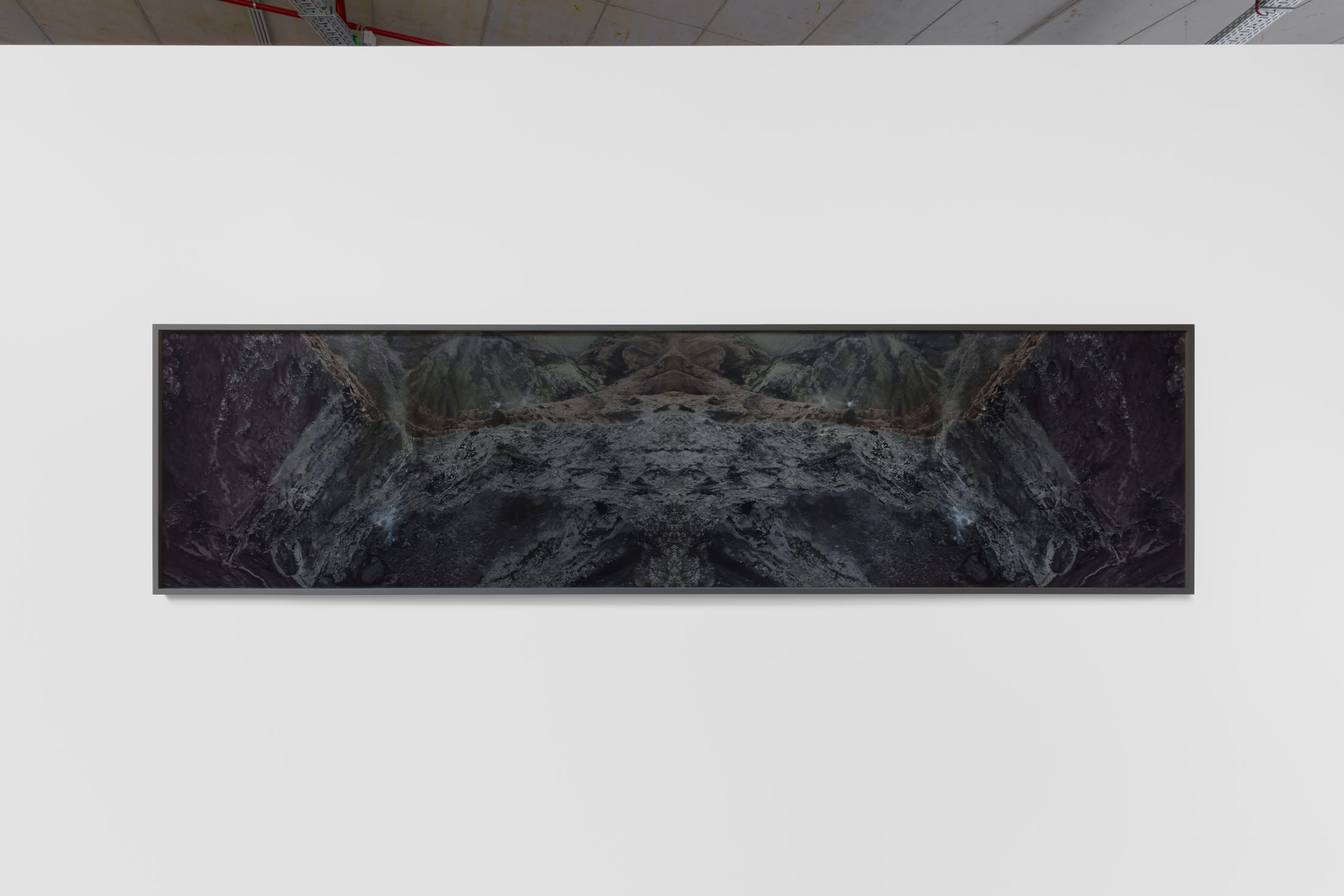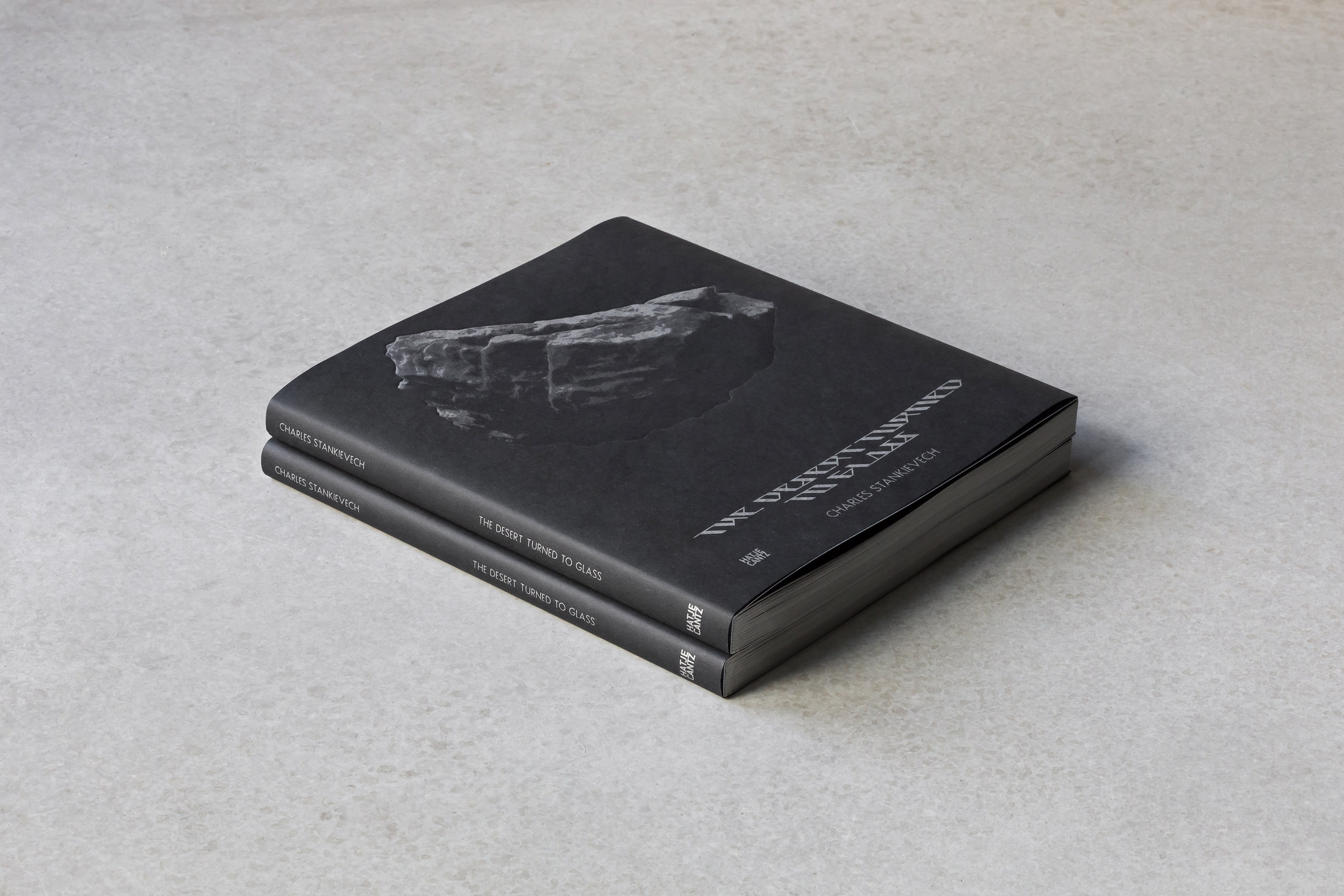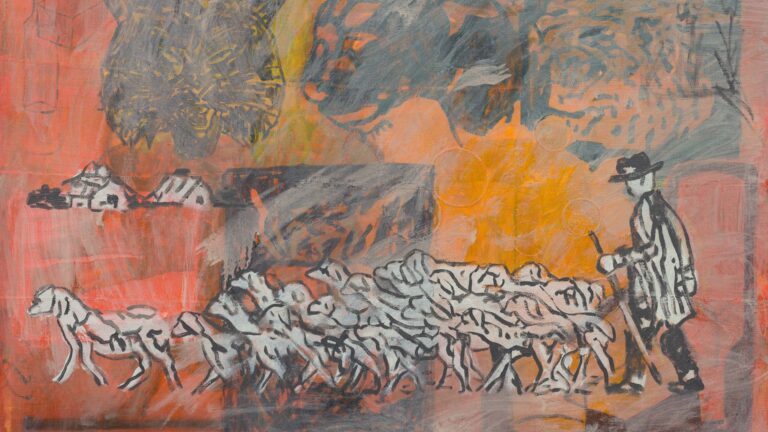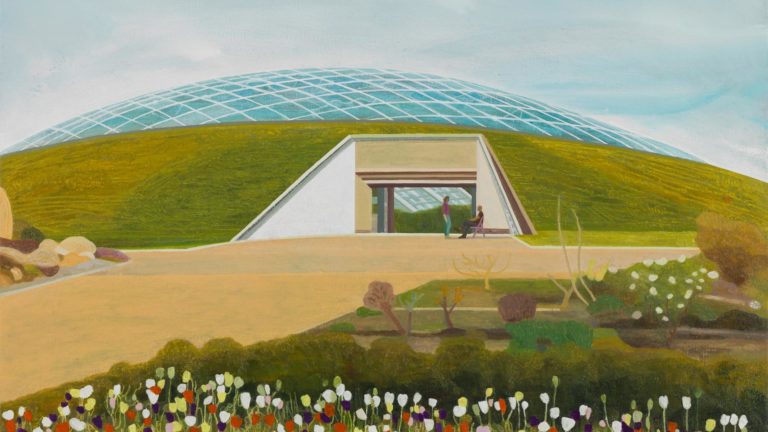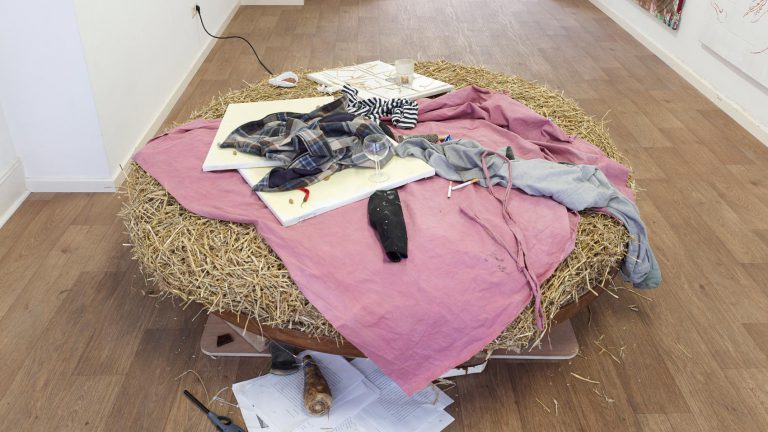Artist: Charles Stankievech
Exhibition title: The Desert Turned to Glass
Venue: KIN, Brussels, Belgium
Date: September 7 – October 21, 2023
Photography: ©Useful Art Services, all images copyright and courtesy of the artist and KIN, Brussels
Note: Exhibition’s floor plan is available here
The Desert Turned to Glass is a meditation oscillating between the cosmic and the chthonic. Traveling through vast distances in space and time from outer space to Paleolithic caves, Stankievech entwines science fiction speculation and contem-porary theories on the origin of life, consciousness, and art. A meteorite floats above a sand floor, a psychedelic video crystallizes deep time. Fog, clouds, and smoke venting from volcanic lava flows across the screen. At a moment obsessed with planetary endings, the video returns to the forma-tion of the earth’s atmosphere in geologic time—in a word, to creation itself.
At the centre of the exhibition, the series Eye of Silence – composed of a video and photographs marshals high atmospheric footage of the Albertan Badlands, the Utah Salt Flats, Icelandic and Japanese volcanoes, and a meteorite crater in the Namibian desert. Visualizing the earth at the critical moments of its evolution, the narrative begins by speculating about the moment when life on the planet was seeded from a frozen meteorite. Accompanying the psychedelic visuals of the video, temporality and timelessness entwine in a sonic fugue, combining both subterranean beats and cosmic noise—inviting the visitor to meditate on deep time through deep listening. In dialogue with contemporary scientific research, the work also comprises original field recordings of solar rays, hydrophone recordings of crackling Arctic ice and flowing Yucatán cenotes and ambisonic recordings captured within the Canary Islands’ volcanic calderas.
Continuing Stankievech’s pursuit of sounds beyond the human threshold, an ultrasonic sound installation, What Is It Like to Be a Bat?, hangs from the ceiling. Using laboratory equipment to run the installation, the work proposes the possibility/ failure of a previously impossible mediation between species. In an attempt at transspecies communication, an Artificial Intelligence reads the classic philosophical essay by Thomas Nagel in a frequency only audible to bats. Visitors in the gallery can strain their attention hoping to hear something, possibly hallucinating like our ances-tors in prehistoric caves who imagined a newly born consciousness that dissolves the boundaries between animal and human.
Finally a scientific model of a historically significant meteorite floats above a sand floor. The levitating artifact suspends the moment in time just before a cataclysmic collision that would fuse sand into glass upon impact. The Desert Turned to Glass calls forth otherworldly experiences from within the depths and heights of this world, at the same time cultivating an aesthetic disposition to receive them.
A book launch for the monograph The Desert Turned to Glass from Hatje Cantz will be hosted by CIVA, Brussels on September 6 at 7 pm.

